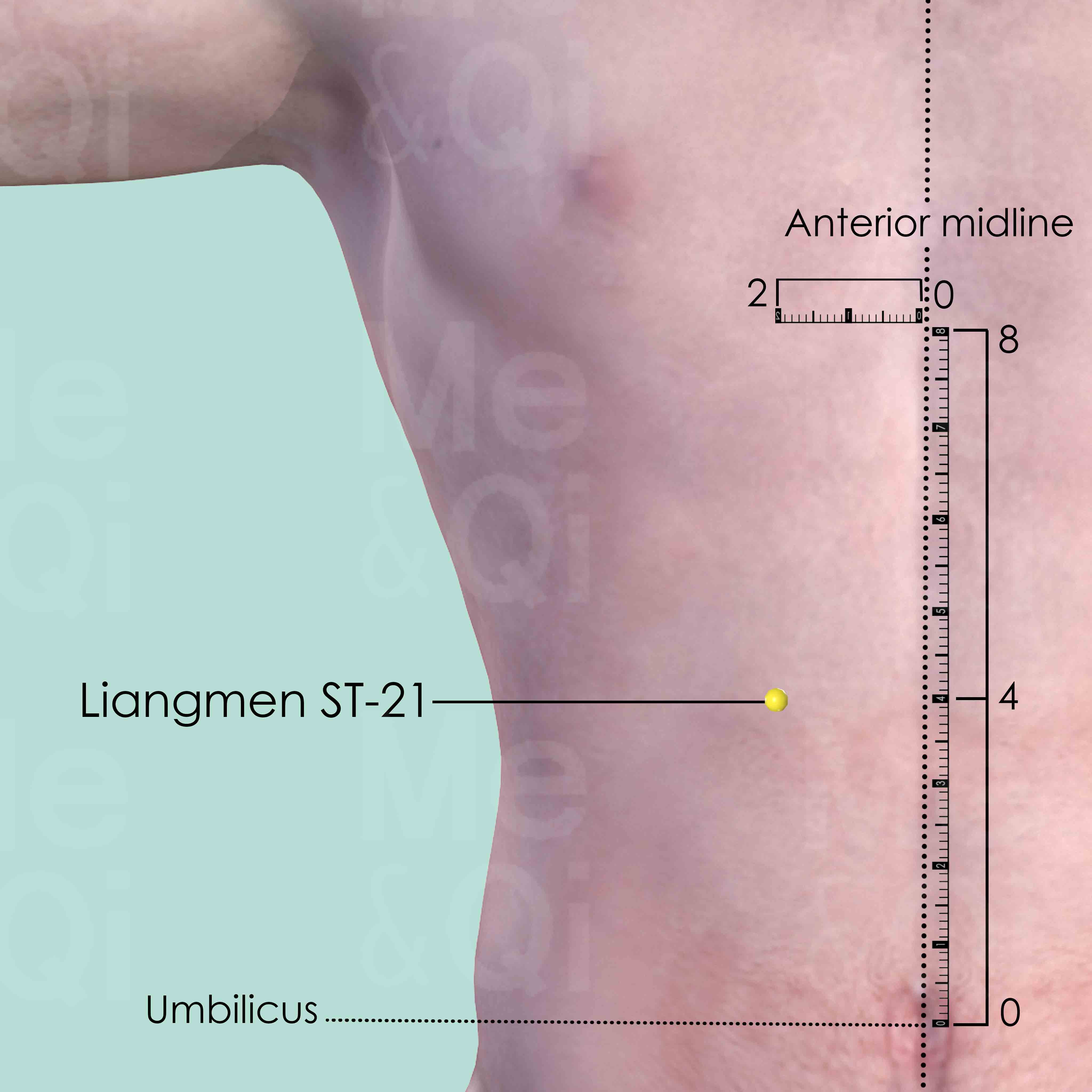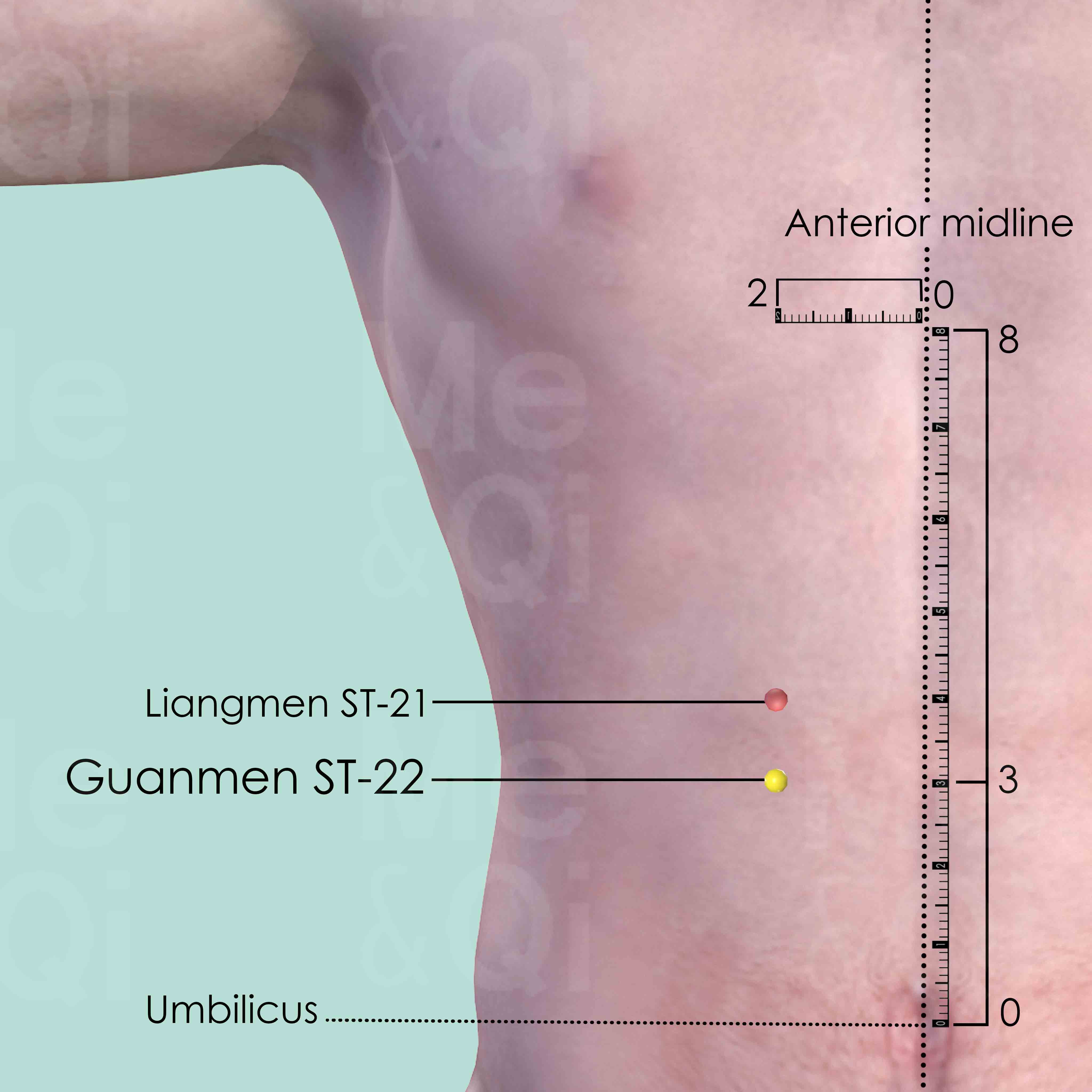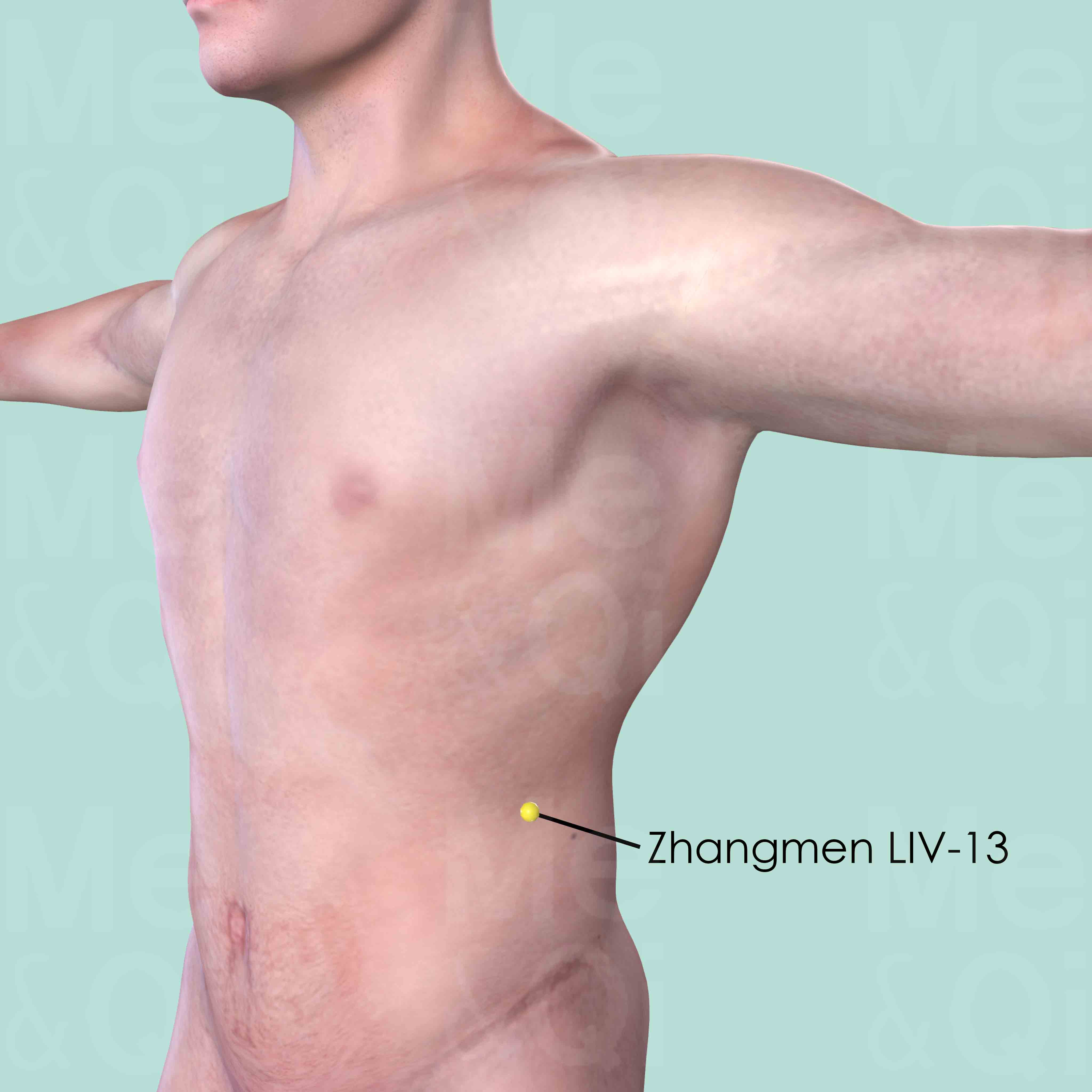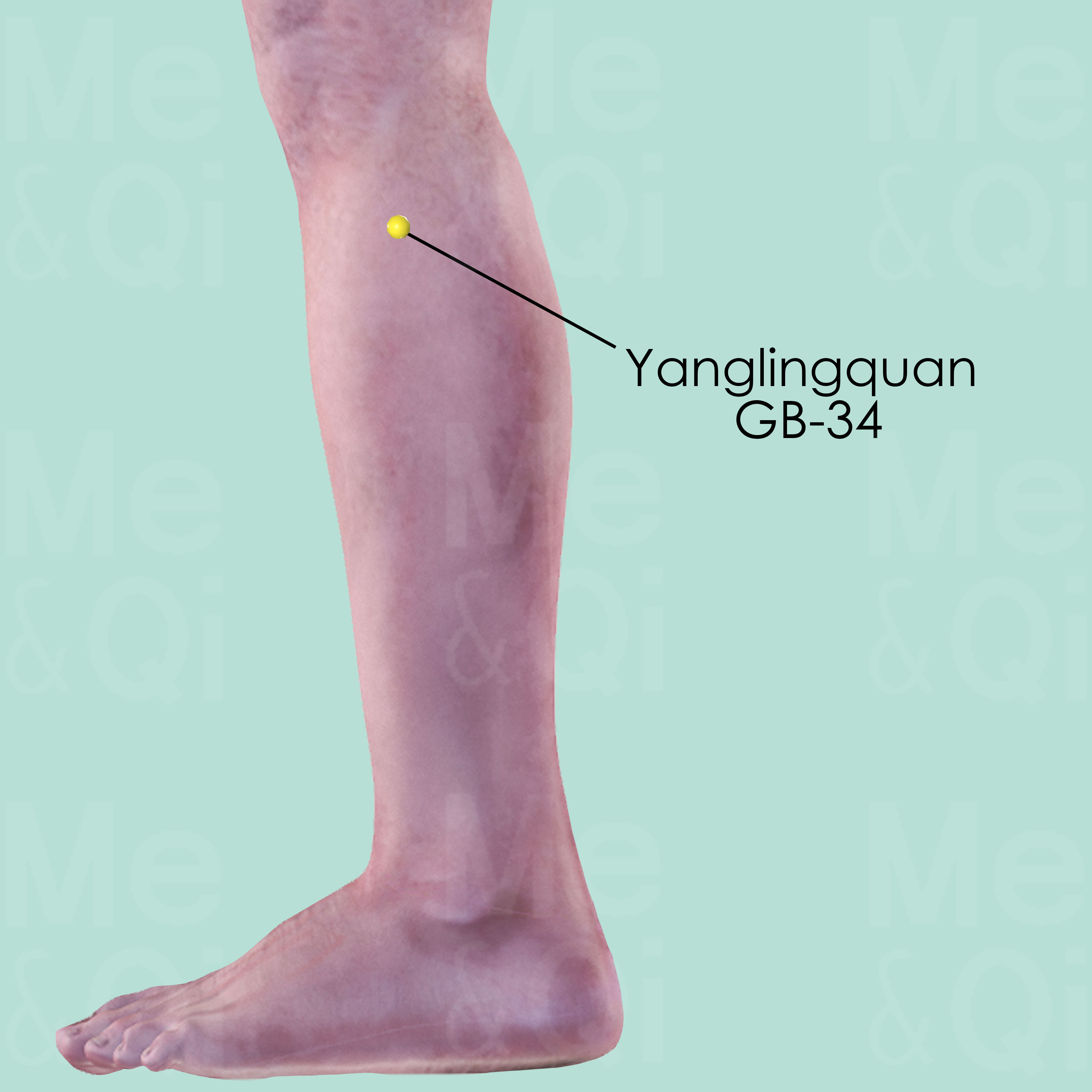Upper Abdominal Distensionaccording to TCM
Symptom families: Upper Abdominal Pain and Discomfort, Abdominal Distension and Fullness
Parent symptom: Abdominal Distention
Did you mean? Upper Abdominal Fullness
What is Upper Abdominal Distension?
Upper abdominal distension is a common symptom characterized by an uncomfortable feeling of tightness or swelling in the upper part of the abdomen. It is often associated with a range of conditions, manifesting as a bloated feeling in the epigastric region.
This discomfort can vary in intensity and may be accompanied by other symptoms such as nausea, belching, or a feeling of fullness even after a light meal. It's important to distinguish this symptom from other forms of abdominal swelling or distention for accurate diagnosis and treatment.
How Does TCM View Upper Abdominal Distension?
In Traditional Chinese Medicine (TCM), upper abdominal distension is viewed through the lens of energetic imbalances and blockages within the body's organ systems. TCM practitioners believe that this symptom arises from disruptions in the flow of Qi (vital energy) and Blood, often due to factors such as emotional stress, dietary habits, or environmental conditions.
TCM emphasizes the interconnectedness of the body's systems, hence the importance of identifying the underlying patterns of disharmony to effectively address the root causes of the symptom.
Root Causes of Upper Abdominal Distension in TCM
TCM identifies several patterns that can lead to upper abdominal distension, focusing on the flow and balance of Qi and Blood within the body. Liver Qi Stagnation is a primary cause, characterized by the interruption of Qi flow, leading to symptoms like hypochondriac distention and mood swings. Another significant pattern is the obstruction of the Spleen by Dampness coupled with Liver Qi Stagnation, manifesting as nausea, lack of appetite, and a sensation of heaviness.
Additionally, Rebellious Liver Qi invading the Stomach is highlighted as a critical pattern, where the Qi of the Liver disrupts the normal function of the Stomach, causing symptoms such as epigastric distension, irritability, and nausea.
Explore below more details about what might cause Upper abdominal distension according to TCM.
Qi Stagnation
Qi Stagnation in TCM is like having a traffic jam in your body's energy system. Qi, the vital life force that flows through your body, is supposed to move smoothly to maintain health and balance. But with Qi Stagnation, this flow gets blocked or slowed down, like cars stuck on a highway. This can lead to symptoms like feeling stressed, emotional mood swings, and physical discomfort, often described as a feeling of fullness or tightness, especially in the chest or abdomen. It's as though the body's internal energy circulation is disrupted, causing various issues. TCM sees this as an energy flow problem, different from modern medicine's focus on specific physiological processes.... see more
Qi Stagnation Patterns That Can Lead to Upper Abdominal Distension
Common Symptoms: Irritability Hypochondriac Distention Depression Nausea Lack Of Appetite Belching Abdominal Distention Melancholia
| Pattern Name | Relevant Symptoms | Relevant Formulas |
|---|---|---|
| Liver Qi Stagnation | Epigastric distension, Epigastrium distension, Hypochondriac distention, Chest distension, Upper abdominal distension, Abdominal distention, Sighing, Melancholia, Depression, Mood swings, Irregular periods, Globus sensation, Pre menstrual breast distension, Pre menstrual tension, Anxiety, Anger... see more | Xia Ru Yong Quan San | Xiao Yao San | Yue Ju Wan | Chai Hu Shu Gan San | Jia Wei Xiao Yao San | Yi Guan Jian |
| Obstruction Of the Spleen By Dampness with Liver Qi Stagnation | Epigastric distension, Upper abdominal oppression, Nausea, Lack of appetite, Diarrhea, Feeling of heaviness, Dry mouth without desire to drink, Dull shallow face, Irritability, Upper abdominal distension, Hypochondriac distention, Hypochondriac pain... see more | Ping Wei San | Dang Gui Shao Yao San |
| Stagnant Liver Qi turning into Fire | Epigastric distension, Hypochondriac distention, Upper abdominal distension, Feeling of oppression of the chest, Irritability, Melancholia, Depression, Mood swings, Globus sensation, Feeling hot, Flushed face, Thirst, Anger, Pre menstrual tension, Irregular periods, Pre menstrual breast distension, Excessive menstruation... see more | Dan Zhi Xiao Yao San |
| Stomach Qi Stagnation | Epigastric distension, Upper abdominal pain, Upper abdominal distension, Belching, Nausea, Vomit, Hiccups, Irritability... see more | Ban Xia Hou Pu Tang | Zuo Jin Wan |
| Liver Qi Stagnation invading the Stomach | Epigastric distension, Belching, Abdominal distention, Upper abdominal distension, Depression, Irritability, Dry mouth, Lack of appetite, Craving for sour foods, Dry throat, Acid reflux... see more | Ban Xia Hou Pu Tang | Zuo Jin Wan |
Qi Rebellion
Rebellious Qi in TCM is a bit like having a rebel inside your body. Qi, which is the vital energy flowing through your body, is supposed to move in certain directions to keep everything in balance and working well. But with Rebellious Qi, this energy decides to go the opposite way. Think of it like a river flowing upstream instead of downstream. This can cause various issues like heartburn, coughing, or even headaches. It's as if the body's natural flow is disrupted, creating a kind of internal chaos. TCM focuses on correcting this flow, restoring order and balance.... see more
Qi Rebellion Patterns That Can Lead to Upper Abdominal Distension
Common Symptoms: Hypochondriac Distention Hiccups Sighing Nausea Or Vomiting Belching Irritability Stomach Churning Breast Engorgement
| Pattern Name | Relevant Symptoms | Relevant Formulas |
|---|---|---|
| Rebellious Liver Qi | Epigastric distension, Hypochondriac distention, Upper abdominal distension, Hiccups, Sighing, Nausea or vomiting, Belching, Stomach churning, Irritability, Breast engorgement, Headaches, Dizziness... see more | Chai Hu Shu Gan San | Si Ni San |
| Rebellious Liver Qi invading the Stomach | Epigastric distension, Irritability, Upper abdominal pain, Upper abdominal distension, Hypochondriac pain, Hypochondriac distention, Upper abdominal oppression, Acid reflux, Hiccups, Belching, Nausea or vomiting, Sighing, Weak limbs... see more | Ban Xia Hou Pu Tang | Xuan Fu Dai Zhe Tang | Si Mo Tang | Ju Pi Zhu Ru Tang | Ding Xiang Shi Di Tang |
Heat
In TCM "Heat" signifies an excess of Yang energy, leading to an imbalance where heat predominates over the body's cool Yin aspects. This condition is metaphorically akin to an internal over-heating. Symptoms indicative of Heat can include feelings of warmth, fever, sweating, irritability, red face, thirst with a preference for cold drinks, and a rapid pulse. The tongue may appear red with a yellow coating. Unlike the common interpretation of heat in terms of temperature, in TCM, it represents a state of hyperactivity or inflammation in the body.... see more
Heat Patterns That Can Lead to Upper Abdominal Distension
Common Symptoms: Irritability Hypochondriac Distention Upper Abdominal Oppression Nausea Lack Of Appetite Diarrhea Feeling Of Heaviness Dry Mouth Without Desire To Drink
| Pattern Name | Relevant Symptoms | Relevant Formulas |
|---|---|---|
| Obstruction Of the Spleen By Dampness with Liver Qi Stagnation | Epigastric distension, Upper abdominal oppression, Nausea, Lack of appetite, Diarrhea, Feeling of heaviness, Dry mouth without desire to drink, Dull shallow face, Irritability, Upper abdominal distension, Hypochondriac distention, Hypochondriac pain... see more | Ping Wei San | Dang Gui Shao Yao San |
| Stagnant Liver Qi turning into Fire | Epigastric distension, Hypochondriac distention, Upper abdominal distension, Feeling of oppression of the chest, Irritability, Melancholia, Depression, Mood swings, Globus sensation, Feeling hot, Flushed face, Thirst, Anger, Pre menstrual tension, Irregular periods, Pre menstrual breast distension, Excessive menstruation... see more | Dan Zhi Xiao Yao San |
Dampness
"Dampness" in TCM is a concept that describes a pattern of disharmony where the body accumulates excess moisture. Imagine the heavy, sticky feeling you get on a very humid day; that's similar to what dampness feels like internally. It can manifest as a sense of heaviness, bloating, sluggishness, or even a foggy mind. This condition is often thought to arise from environmental factors like living in a damp place, dietary habits that promote moisture in the body, or internal imbalances that hinder the body's ability to process fluids properly. In TCM, dampness can obstruct the normal flow of energy and fluids in the body, leading to various symptoms.... see more
Dampness Patterns That Can Lead to Upper Abdominal Distension
| Pattern Name | Relevant Symptoms | Relevant Formulas |
|---|---|---|
| Obstruction Of the Spleen By Dampness with Liver Qi Stagnation | Epigastric distension, Upper abdominal oppression, Nausea, Lack of appetite, Diarrhea, Feeling of heaviness, Dry mouth without desire to drink, Dull shallow face, Irritability, Upper abdominal distension, Hypochondriac distention, Hypochondriac pain... see more | Ping Wei San | Dang Gui Shao Yao San |
Liver
In TCM the Liver is viewed as the organ responsible for the smooth flow of Qi, Blood, and emotions throughout the body. It plays a key role in regulating mood, storing blood, supporting digestion, and ensuring the health of tendons and eyes. When the Liver malfunctions or is imbalanced in TCM, it can lead to a range of issues such as irritability, mood swings, menstrual irregularities, eye problems, and muscular stiffness or pain. A malfunctioning Liver in TCM reflects not only physical disturbances but also emotional and mental disharmony, emphasizing the holistic approach of TCM in addressing health and wellness.... see more
Liver Patterns That Can Lead to Upper Abdominal Distension
Common Symptoms: Irritability Hypochondriac Distention Belching Sighing Depression Hiccups Hypochondriac Pain Lack Of Appetite
| Pattern Name | Relevant Symptoms | Relevant Formulas |
|---|---|---|
| Liver Qi Stagnation | Epigastric distension, Epigastrium distension, Hypochondriac distention, Chest distension, Upper abdominal distension, Abdominal distention, Sighing, Melancholia, Depression, Mood swings, Irregular periods, Globus sensation, Pre menstrual breast distension, Pre menstrual tension, Anxiety, Anger... see more | Xia Ru Yong Quan San | Xiao Yao San | Yue Ju Wan | Chai Hu Shu Gan San | Jia Wei Xiao Yao San | Yi Guan Jian |
| Obstruction Of the Spleen By Dampness with Liver Qi Stagnation | Epigastric distension, Upper abdominal oppression, Nausea, Lack of appetite, Diarrhea, Feeling of heaviness, Dry mouth without desire to drink, Dull shallow face, Irritability, Upper abdominal distension, Hypochondriac distention, Hypochondriac pain... see more | Ping Wei San | Dang Gui Shao Yao San |
| Rebellious Liver Qi | Epigastric distension, Hypochondriac distention, Upper abdominal distension, Hiccups, Sighing, Nausea or vomiting, Belching, Stomach churning, Irritability, Breast engorgement, Headaches, Dizziness... see more | Chai Hu Shu Gan San | Si Ni San |
| Rebellious Liver Qi invading the Stomach | Epigastric distension, Irritability, Upper abdominal pain, Upper abdominal distension, Hypochondriac pain, Hypochondriac distention, Upper abdominal oppression, Acid reflux, Hiccups, Belching, Nausea or vomiting, Sighing, Weak limbs... see more | Ban Xia Hou Pu Tang | Xuan Fu Dai Zhe Tang | Si Mo Tang | Ju Pi Zhu Ru Tang | Ding Xiang Shi Di Tang |
| Stagnant Liver Qi turning into Fire | Epigastric distension, Hypochondriac distention, Upper abdominal distension, Feeling of oppression of the chest, Irritability, Melancholia, Depression, Mood swings, Globus sensation, Feeling hot, Flushed face, Thirst, Anger, Pre menstrual tension, Irregular periods, Pre menstrual breast distension, Excessive menstruation... see more | Dan Zhi Xiao Yao San |
| Liver Qi Stagnation invading the Stomach | Epigastric distension, Belching, Abdominal distention, Upper abdominal distension, Depression, Irritability, Dry mouth, Lack of appetite, Craving for sour foods, Dry throat, Acid reflux... see more | Ban Xia Hou Pu Tang | Zuo Jin Wan |
Stomach
In TCM the Stomach is regarded as the "sea of nourishment," pivotal for digesting food and transforming it into Qi and blood. It works closely with the Spleen to distribute these essential nutrients throughout the body. When the Stomach is out of balance or malfunctions in TCM, it often leads to digestive problems such as bloating, nausea, vomiting, poor appetite, or a feeling of fullness. There may also be issues like acid reflux or a sour taste in the mouth. Emotionally, an imbalanced Stomach can contribute to excessive worry and overthinking, reflecting the TCM belief that physical and emotional well-being are deeply interconnected.... see more
Stomach Patterns That Can Lead to Upper Abdominal Distension
Common Symptoms: Belching Irritability Acid Reflux Upper Abdominal Pain Hiccups Abdominal Distention Depression Dry Mouth
| Pattern Name | Relevant Symptoms | Relevant Formulas |
|---|---|---|
| Rebellious Liver Qi invading the Stomach | Epigastric distension, Irritability, Upper abdominal pain, Upper abdominal distension, Hypochondriac pain, Hypochondriac distention, Upper abdominal oppression, Acid reflux, Hiccups, Belching, Nausea or vomiting, Sighing, Weak limbs... see more | Ban Xia Hou Pu Tang | Xuan Fu Dai Zhe Tang | Si Mo Tang | Ju Pi Zhu Ru Tang | Ding Xiang Shi Di Tang |
| Stomach Qi Stagnation | Epigastric distension, Upper abdominal pain, Upper abdominal distension, Belching, Nausea, Vomit, Hiccups, Irritability... see more | Ban Xia Hou Pu Tang | Zuo Jin Wan |
| Liver Qi Stagnation invading the Stomach | Epigastric distension, Belching, Abdominal distention, Upper abdominal distension, Depression, Irritability, Dry mouth, Lack of appetite, Craving for sour foods, Dry throat, Acid reflux... see more | Ban Xia Hou Pu Tang | Zuo Jin Wan |
Spleen
In TCM the Spleen plays a vital role in digestion and transformation, converting food into energy and nutrients, and overseeing the distribution of Qi and Blood. It's also crucial in maintaining the health of muscles and limbs and ensuring the blood remains within the vessels. When the Spleen malfunctions in TCM, it can lead to a variety of issues such as digestive disorders, fatigue, weak muscles, bloating, and a feeling of heaviness. It can also cause a pale complexion, poor appetite, and a tendency to bruise easily. Emotionally, a Spleen imbalance is often associated with excessive worry or overthinking, reflecting its role in the interplay between physical and mental health.... see more
Spleen Patterns That Can Lead to Upper Abdominal Distension
| Pattern Name | Relevant Symptoms | Relevant Formulas |
|---|---|---|
| Obstruction Of the Spleen By Dampness with Liver Qi Stagnation | Epigastric distension, Upper abdominal oppression, Nausea, Lack of appetite, Diarrhea, Feeling of heaviness, Dry mouth without desire to drink, Dull shallow face, Irritability, Upper abdominal distension, Hypochondriac distention, Hypochondriac pain... see more | Ping Wei San | Dang Gui Shao Yao San |
TCM Herbal Formulas for Upper Abdominal Distension
To address the complexities of upper abdominal distension, TCM prescribes specific formulas based on the identified patterns. For the disruption caused by Liver Qi Stagnation, Xia Ru Yong Quan San, containing Dong Quai, is recommended to soothe and invigorate Blood. When Dampness affects the Spleen along with Liver Qi Stagnation, Ping Wei San, with Cang Zhu, works to eliminate dampness and harmonize the stomach.
For cases of Rebellious Liver Qi invading the Stomach, treatment focuses on restoring harmony between the Liver and Stomach. Formulas such as Ban Xia Hou Pu Tang, which features Crow-Dipper Rhizomes, are used to promote Qi movement and alleviate the Rebellious Qi, effectively addressing the root of distension and associated discomfort.
Explore below some TCM herbal formulas used to address upper abdominal distension, organized by cause and by formula type.
- By Cause
- By Formula Type
- Qi Stagnation
- Qi Rebellion
- Heat
- Dampness
- View More Causes
- Formulas that promote qi movement
- Formulas that harmonize liver-Spleen
- Formulas for a rebellious qi
- Formulas that invigorate blood and dispel blood stagnation
- Formulas that clear heat
- Formulas that transform dampness and harmonize stomach
- Formulas that clear liver-Heat
- Formulas that nourish yin and tonify
Top Formula for Qi Stagnation:
Ban Xia Hou Pu Tang
Suitable for Qi Stagnation patterns that may cause upper abdominal distension, such as Liver Qi Stagnation invading the Stomach or Stomach Qi Stagnation
Learn moreAll Formulas Recommended for Upper Abdominal Distension Caused by Qi Stagnation
| Formula | Patterns Suitable For |
|---|---|
| Ban Xia Hou Pu Tang | Liver Qi Stagnation invading the Stomach, Stomach Qi Stagnation |
| Zuo Jin Wan | Liver Qi Stagnation invading the Stomach, Stomach Qi Stagnation |
| Chai Hu Shu Gan San | Liver Qi Stagnation |
| Xia Ru Yong Quan San | Liver Qi Stagnation |
| Xiao Yao San | Liver Qi Stagnation |
| Yue Ju Wan | Liver Qi Stagnation |
| Jia Wei Xiao Yao San | Liver Qi Stagnation |
| Yi Guan Jian | Liver Qi Stagnation |
| Ping Wei San | Obstruction Of the Spleen By Dampness with Liver Qi Stagnation |
| Dang Gui Shao Yao San | Obstruction Of the Spleen By Dampness with Liver Qi Stagnation |
| Dan Zhi Xiao Yao San | Stagnant Liver Qi turning into Fire |
Top Formula for Qi Rebellion:
Ban Xia Hou Pu Tang
Suitable for Qi Rebellion patterns that may cause upper abdominal distension, such as Rebellious Liver Qi invading the Stomach
Learn moreAll Formulas Recommended for Upper Abdominal Distension Caused by Qi Rebellion
| Formula | Patterns Suitable For |
|---|---|
| Ban Xia Hou Pu Tang | Rebellious Liver Qi invading the Stomach |
| Chai Hu Shu Gan San | Rebellious Liver Qi |
| Si Ni San | Rebellious Liver Qi |
| Xuan Fu Dai Zhe Tang | Rebellious Liver Qi invading the Stomach |
| Si Mo Tang | Rebellious Liver Qi invading the Stomach |
| Ju Pi Zhu Ru Tang | Rebellious Liver Qi invading the Stomach |
| Ding Xiang Shi Di Tang | Rebellious Liver Qi invading the Stomach |
Top Formula for Heat:
Ping Wei San
Suitable for Heat patterns that may cause upper abdominal distension, such as Obstruction Of the Spleen By Dampness with Liver Qi Stagnation
Learn moreAll Formulas Recommended for Upper Abdominal Distension Caused by Heat
| Formula | Patterns Suitable For |
|---|---|
| Ping Wei San | Obstruction Of the Spleen By Dampness with Liver Qi Stagnation |
| Dang Gui Shao Yao San | Obstruction Of the Spleen By Dampness with Liver Qi Stagnation |
| Dan Zhi Xiao Yao San | Stagnant Liver Qi turning into Fire |
Top Formula for Dampness:
Ping Wei San
Suitable for Dampness patterns that may cause upper abdominal distension, such as Obstruction Of the Spleen By Dampness with Liver Qi Stagnation
Learn moreAll Formulas Recommended for Upper Abdominal Distension Caused by Dampness
| Formula | Patterns Suitable For |
|---|---|
| Ping Wei San | Obstruction Of the Spleen By Dampness with Liver Qi Stagnation |
| Dang Gui Shao Yao San | Obstruction Of the Spleen By Dampness with Liver Qi Stagnation |
Formulas that promote Qi movement
These formulas are suitable for some upper abdominal distension-causing patterns like Liver Qi Stagnation invading the Stomach or Rebellious Liver Qi invading the Stomach.
One such formula is Ban Xia Hou Pu Tang, with crow-dipper rhizome as a key herb.
Other formulas of this category are listed in the table below.
All "formulas that promote qi movement" recommended for upper abdominal distension
| Formula | Patterns Suitable For (if applicable) |
|---|---|
| Ban Xia Hou Pu Tang | Liver Qi Stagnation invading the Stomach, Rebellious Liver Qi invading the Stomach, Stomach Qi Stagnation... see more |
| Chai Hu Shu Gan San | Rebellious Liver Qi, Liver Qi Stagnation |
| Yue Ju Wan | Liver Qi Stagnation |
| Si Mo Tang | Rebellious Liver Qi invading the Stomach |
Formulas that harmonize Liver-Spleen
These formulas are suitable for some upper abdominal distension-causing patterns like Liver Qi Stagnation.
One such formula is Xiao Yao San, with bupleurum root as a key herb.
Other formulas of this category are listed in the table below.
All "formulas that harmonize liver-Spleen" recommended for upper abdominal distension
| Formula | Patterns Suitable For (if applicable) |
|---|---|
| Xiao Yao San | Liver Qi Stagnation |
| Si Ni San | Rebellious Liver Qi |
| Jia Wei Xiao Yao San | Liver Qi Stagnation |
Formulas that invigorate Blood and dispel Blood Stagnation
These formulas are suitable for some upper abdominal distension-causing patterns like Liver Qi Stagnation.
One such formula is Xia Ru Yong Quan San, with dong quai as a key herb.
Other formulas of this category are listed in the table below.
All "formulas that invigorate blood and dispel blood stagnation" recommended for upper abdominal distension
| Formula | Patterns Suitable For (if applicable) |
|---|---|
| Xia Ru Yong Quan San | Liver Qi Stagnation |
| Dang Gui Shao Yao San | Obstruction Of the Spleen By Dampness with Liver Qi Stagnation |
Formulas that clear Heat
These formulas are suitable for some upper abdominal distension-causing patterns like Liver Qi Stagnation invading the Stomach or Stomach Qi Stagnation.
One such formula is Zuo Jin Wan, with goldthread rhizome as a key herb.
Formulas for a rebellious Qi
These formulas are suitable for some upper abdominal distension-causing patterns like Rebellious Liver Qi invading the Stomach.
One such formula is Xuan Fu Dai Zhe Tang, with inula flower as a key herb.
Other formulas of this category are listed in the table below.
All "formulas for a rebellious qi" recommended for upper abdominal distension
| Formula | Patterns Suitable For (if applicable) |
|---|---|
| Xuan Fu Dai Zhe Tang | Rebellious Liver Qi invading the Stomach |
| Ju Pi Zhu Ru Tang | Rebellious Liver Qi invading the Stomach |
| Ding Xiang Shi Di Tang | Rebellious Liver Qi invading the Stomach |
Formulas that transform Dampness and harmonize Stomach
These formulas are suitable for some upper abdominal distension-causing patterns like Obstruction Of the Spleen By Dampness with Liver Qi Stagnation.
One such formula is Ping Wei San, with black atractylodes rhizome as a key herb.
Formulas that clear Liver-Heat
These formulas are suitable for some upper abdominal distension-causing patterns like Stagnant Liver Qi turning into Fire.
One such formula is Dan Zhi Xiao Yao San, with mudan peony bark as a key herb.
Formulas that nourish Yin and tonify
These formulas are suitable for some upper abdominal distension-causing patterns like Liver Qi Stagnation.
One such formula is Yi Guan Jian
Acupoints for Upper Abdominal Distension
TCM also employs acupuncture as a complementary treatment for upper abdominal distension, targeting specific acupoints to restore balance. Points like Chengman ST-20 and Guanmen ST-22 are stimulated to harmonize the Middle Burner and invigorate Stomach Qi.
Liangmen ST-21 is used for its effect on Stomach Qi and clearing Stomach Heat. In addressing the underlying patterns, points on the Liver and Spleen channels, such as Qimen LIV-14 and Gongsun SP-4, are also utilized to invigorate Liver Qi and harmonize the Spleen, providing relief from distension.
Explore below some acupoints used to address upper abdominal distension, organized by meridian.
- By Meridian
- Stomach Channel
- Directing Vessel
- Liver Channel
- Spleen Channel
- Pericardium Channel
- Bladder Channel
- Gall Bladder Channel
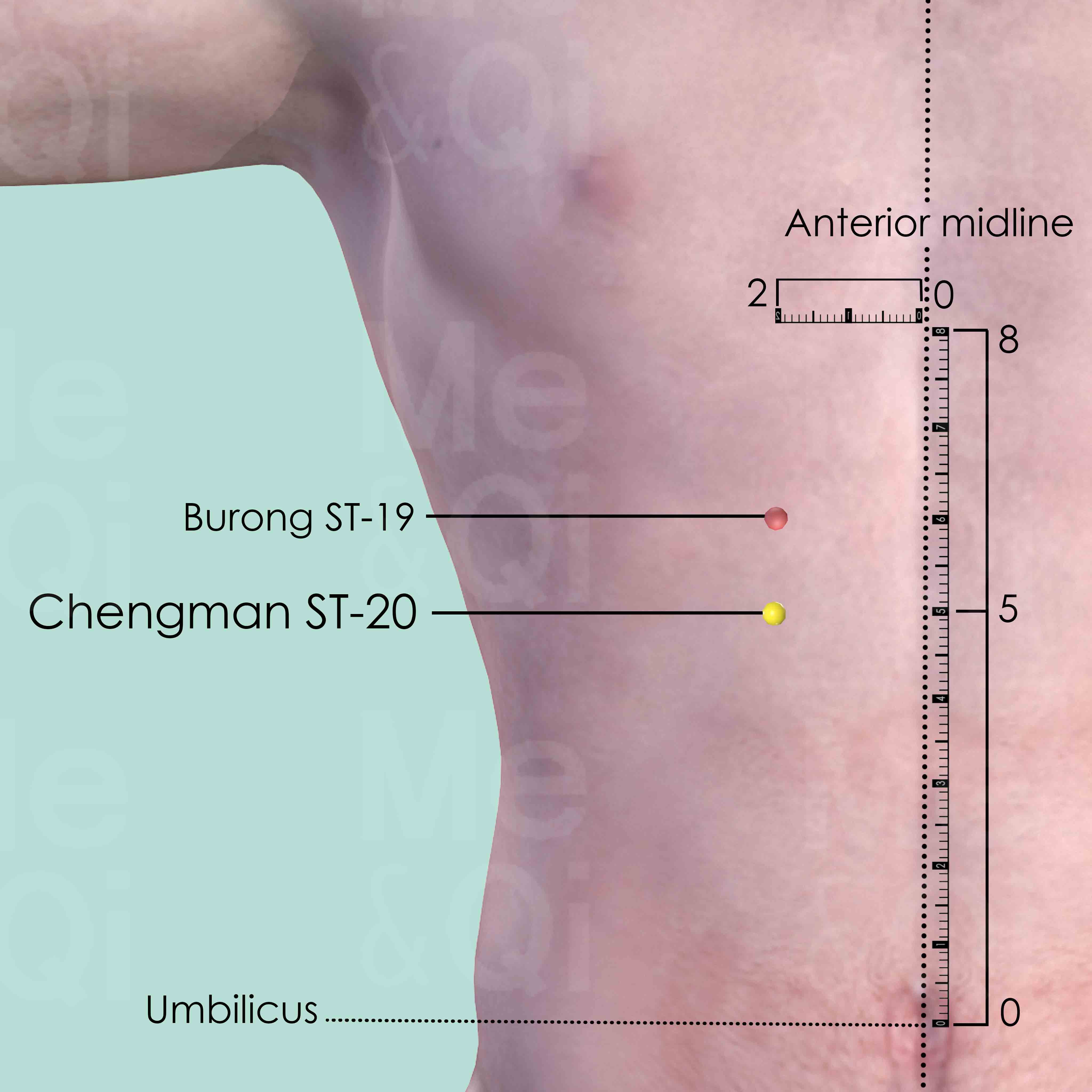
Chengman ST-20
5 cun above the umbilicus and 2 cun lateral to the anterior midline, or 1 cun below Burong ST-19.
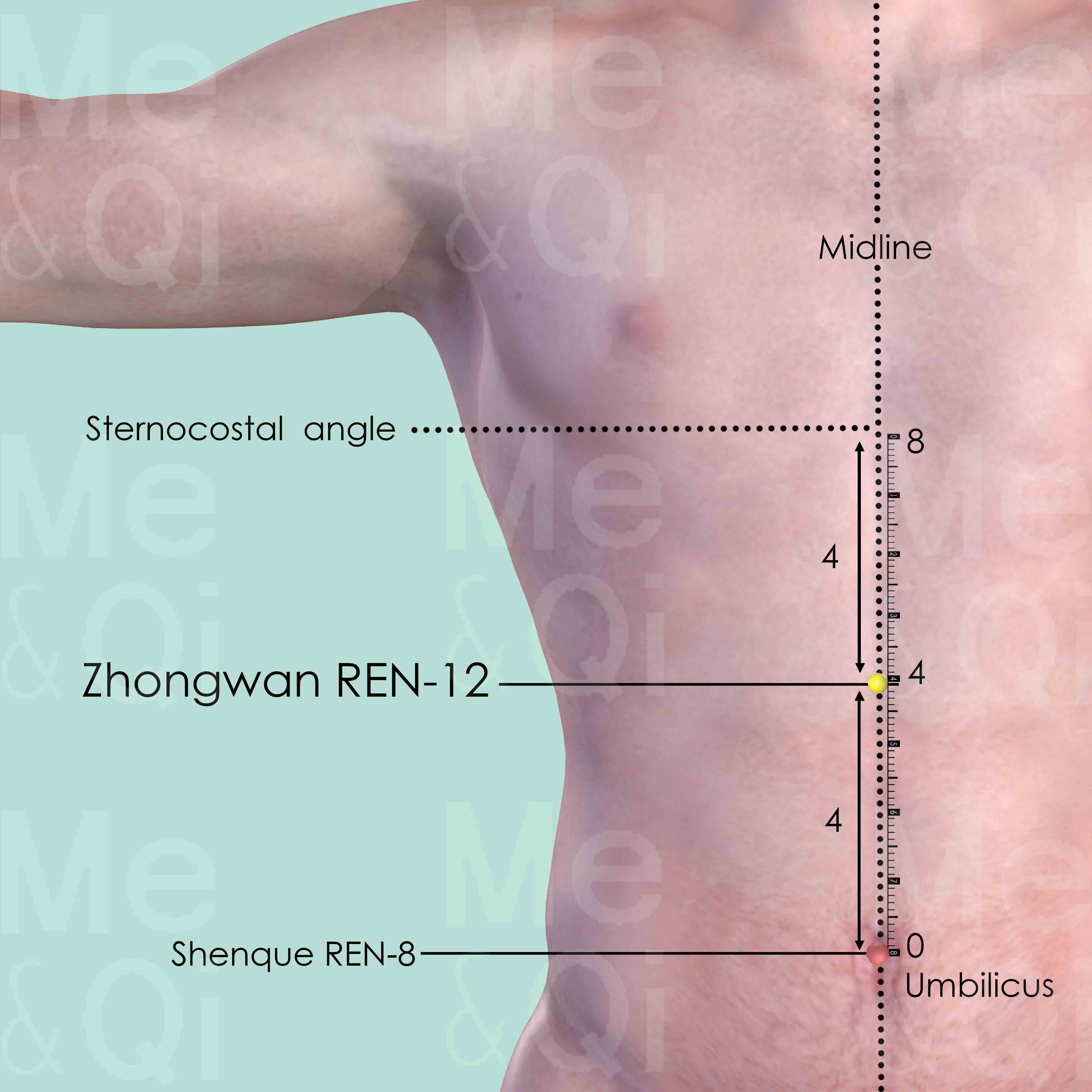
Zhongwan REN-12
On the midline of the abdomen, 4 cun above the umbilicus and 4 cun below the sternocostal angle.
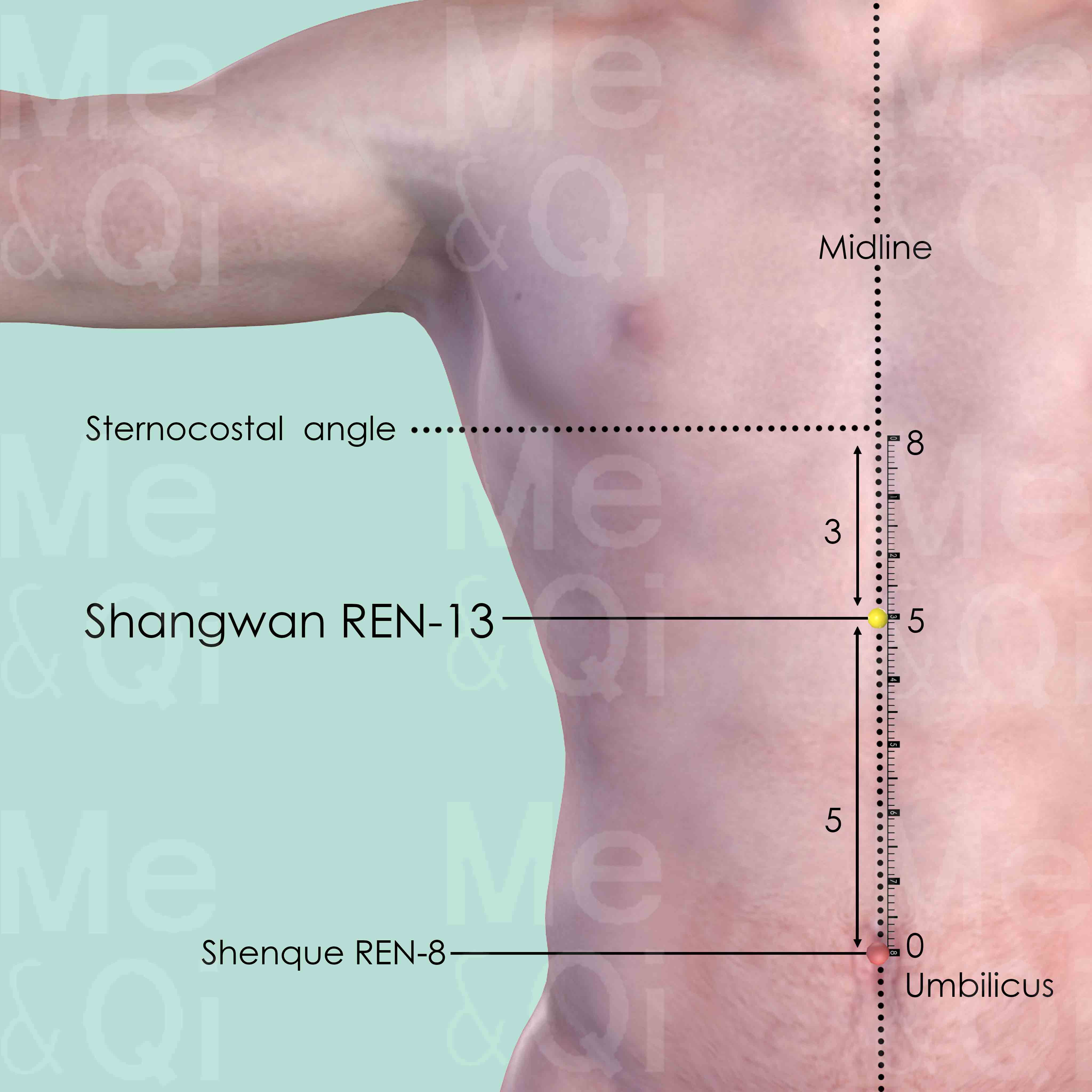
Shangwan REN-13
On the midline of the abdomen, 5 cun above the umbilicus and 3 cun below the sternocostal angle.
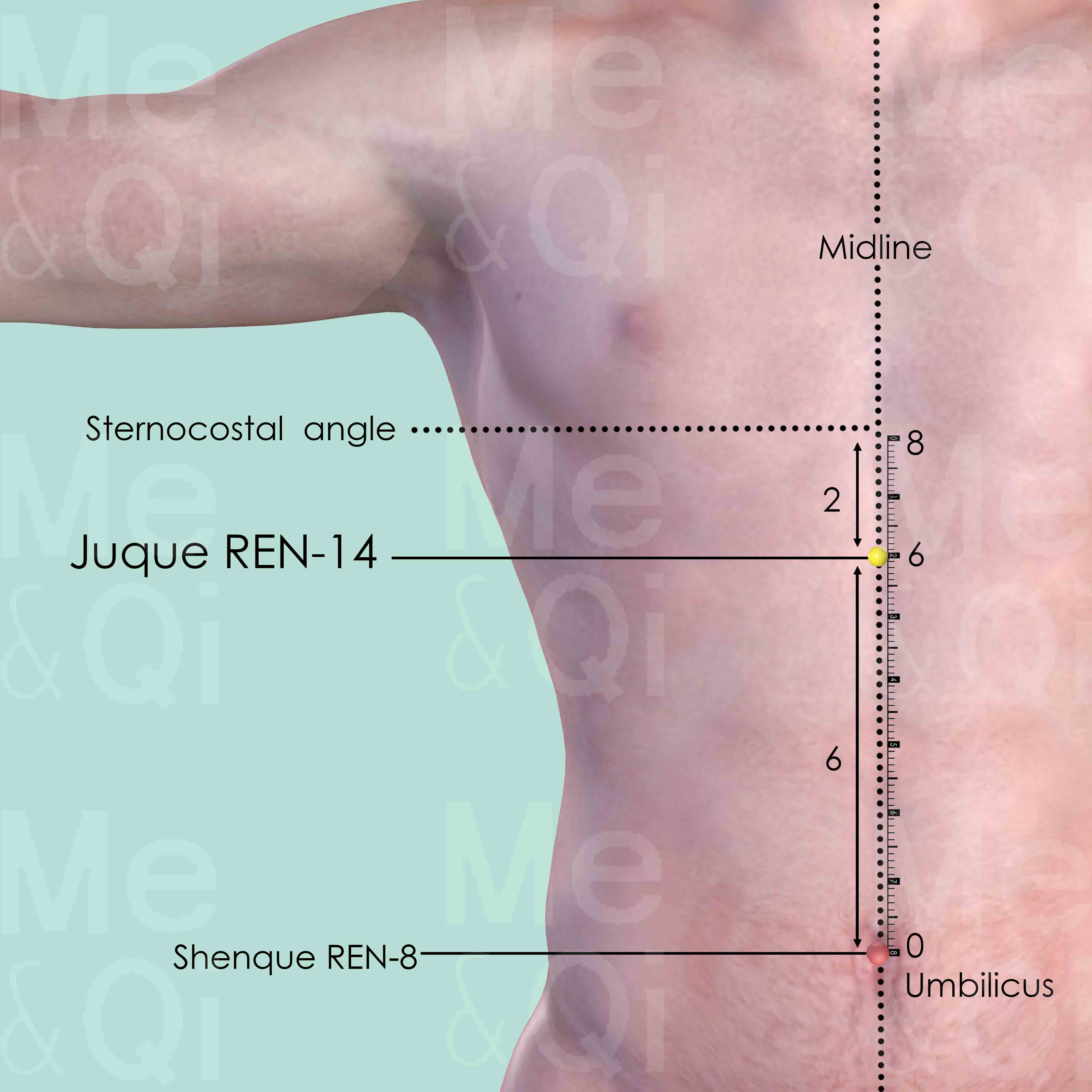
Juque REN-14
On the midline of the abdomen, 6 cun above the umbilicus and 2 cun below the sternocostal angle.
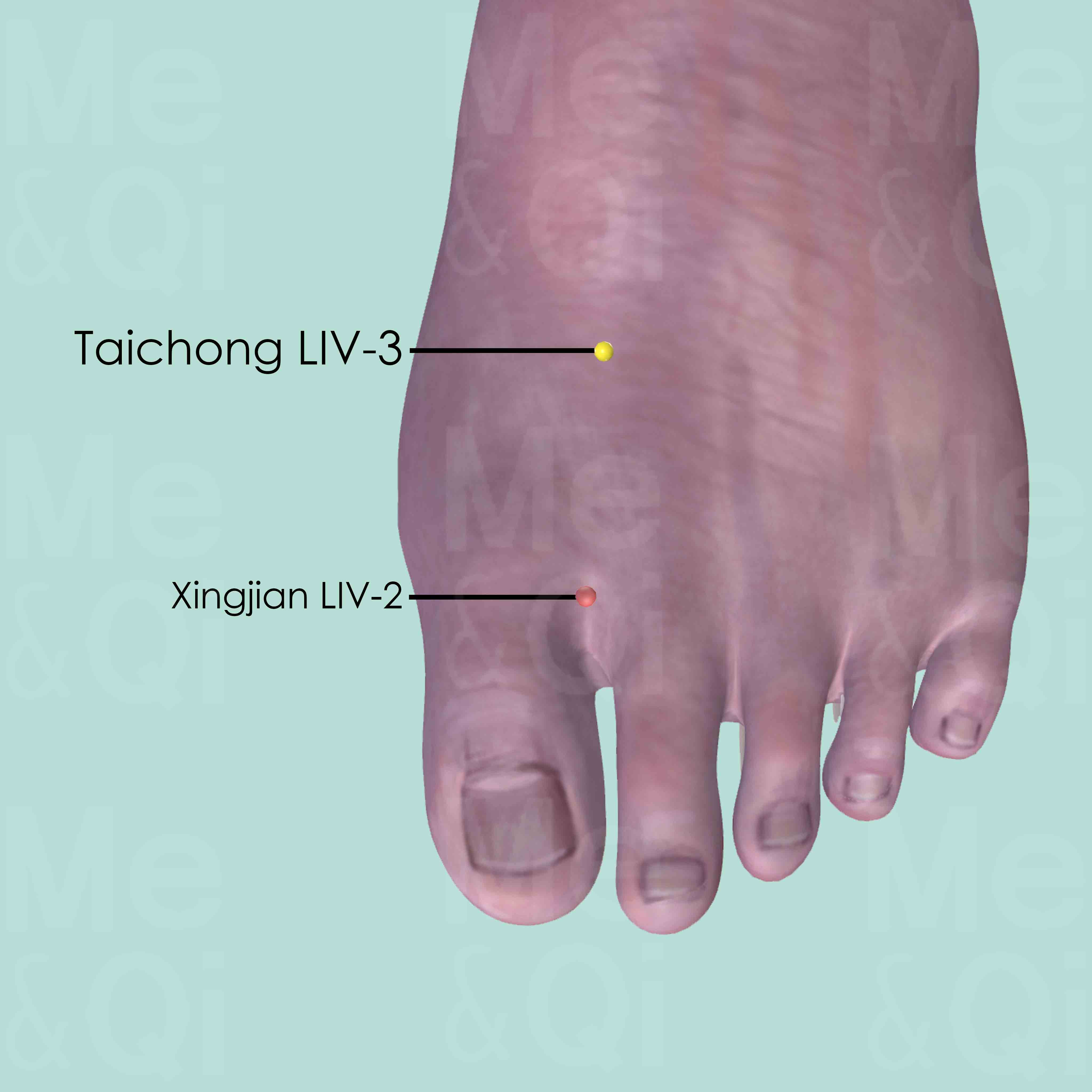
Taichong LIV-3
On the dorsum of the foot, between the 1st and 2nd metatarsal bones, in the depression proximal to the metatarsophalangeal joints and the proximal angle between the two bones.
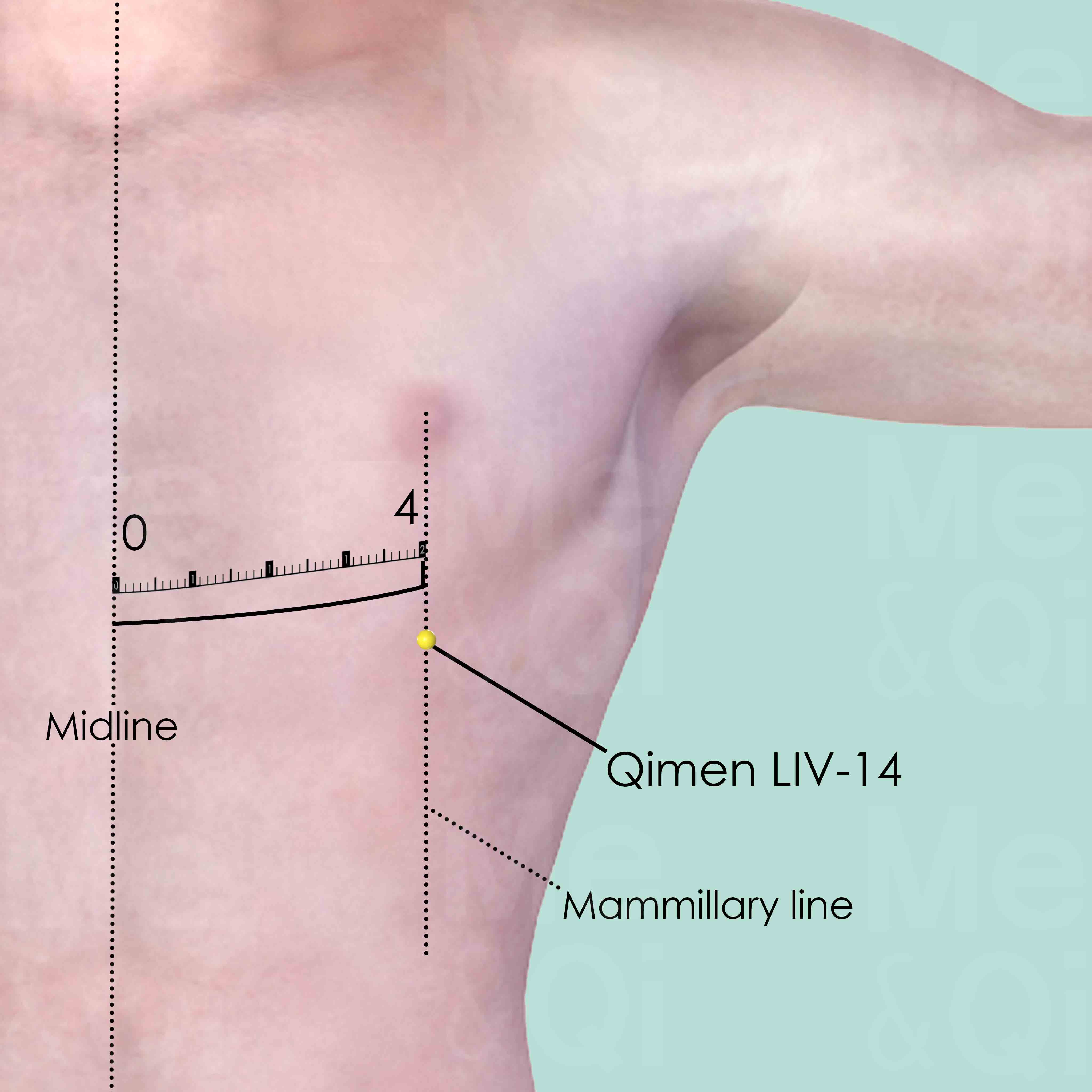
Qimen LIV-14
On the mammillary line, two ribs below the nipple, in the 6th intercostal space, 4 cun lateral to the midline. Please note that there is an alternative location for LIV-14 at the lower edge of the ribcage in line with the nipple or, in women, 4 cun from the midline. In fact, one could look upon these as two separate points. The one in the intercostal space is used more for Channel problems. While the one at the lower edge of the ribcage is used more for Organ problems.
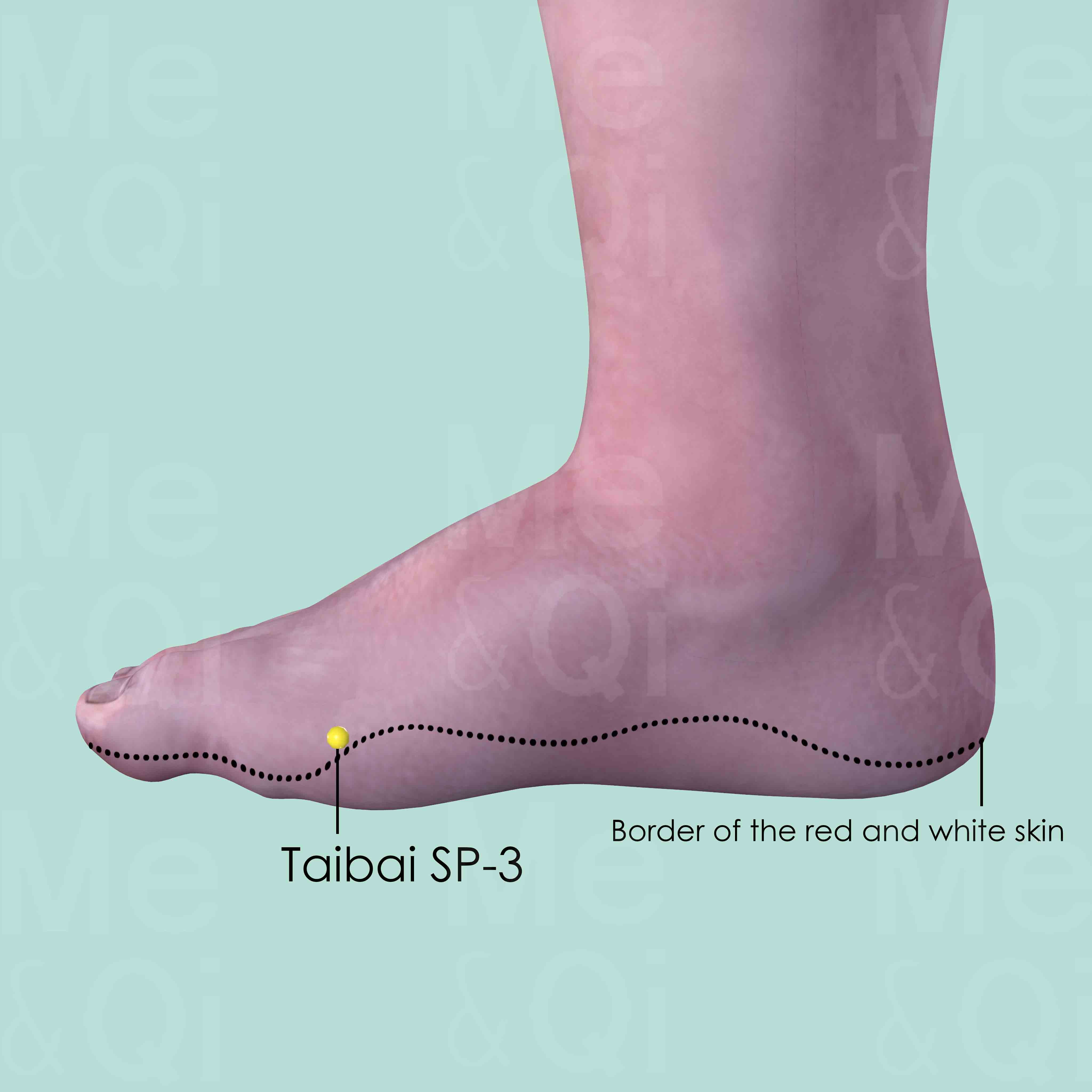
Taibai SP-3
Proximal and inferior to the head of the 1st metatarsal bone, at the border of the red and white skin.
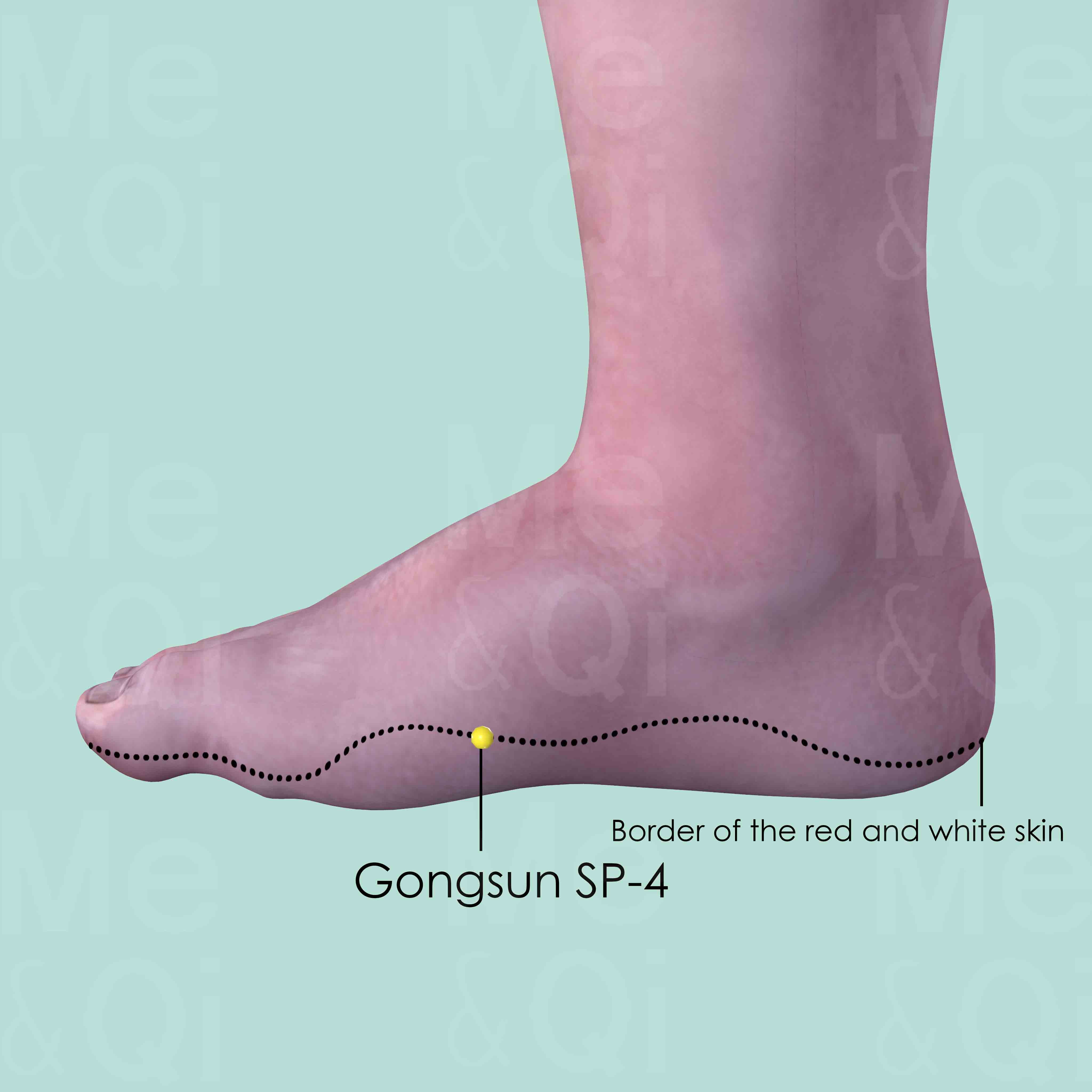
Gongsun SP-4
In the depression distal and inferior to the base of the 1st metatarsal bone, at the border of the red and white skin.
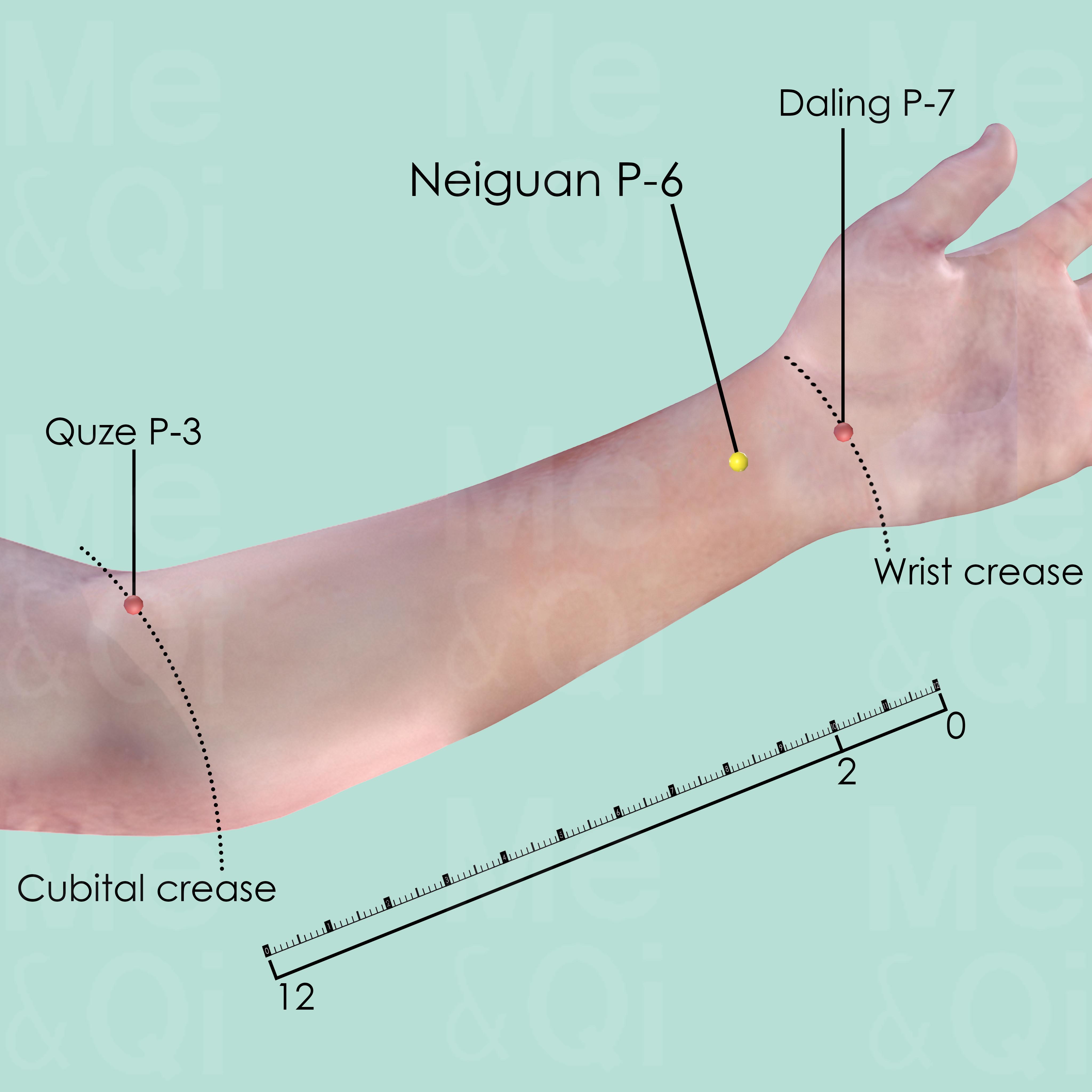
Neiguan P-6
2 cun above Daling P-7 on the transverse crease of the wrist, between the tendons of palmaris longus and flexor carpi radialis muscle.
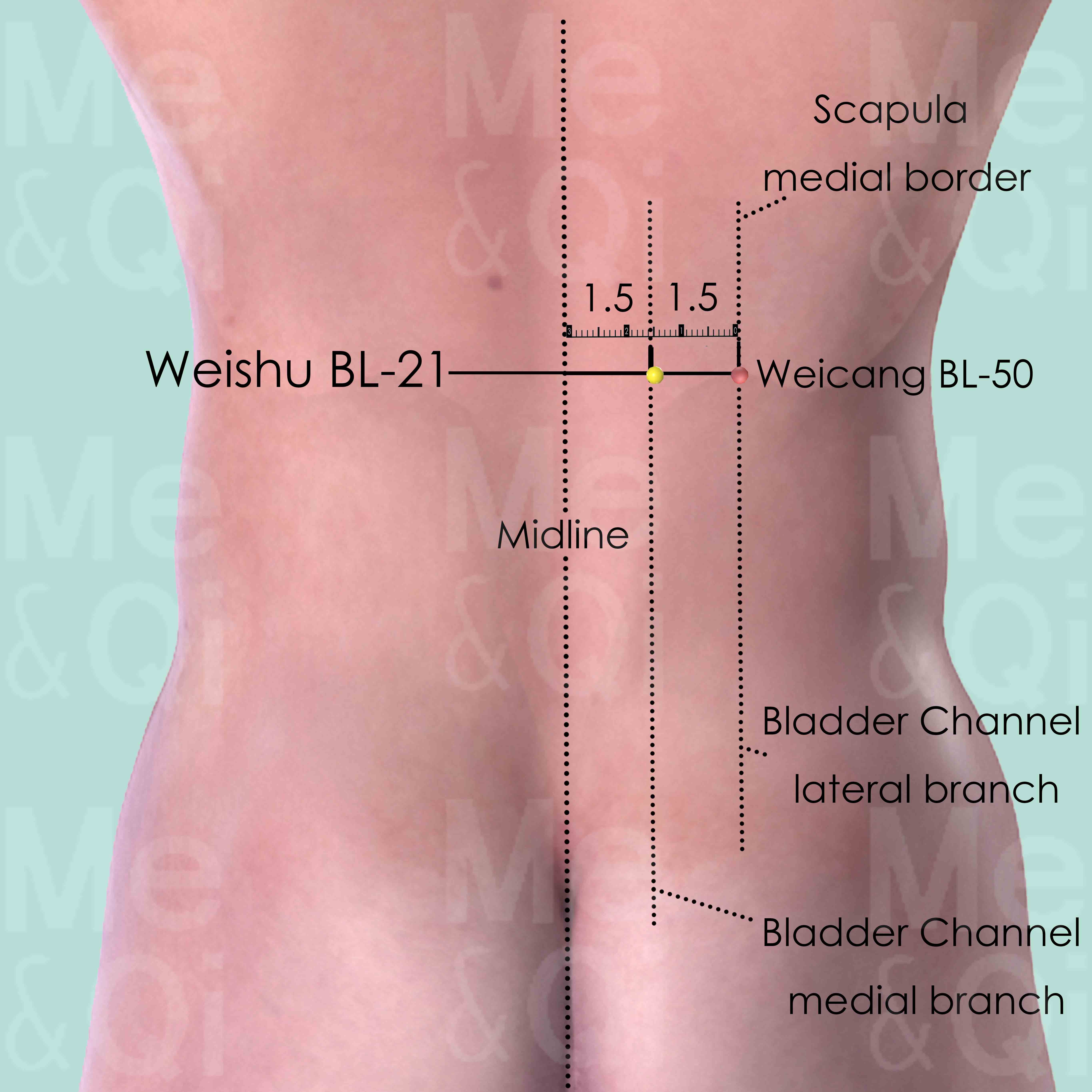
Weishu BL-21
1.5 cun lateral to the lower border of the spinous process of the 12th thoracic vertebra (T12).

